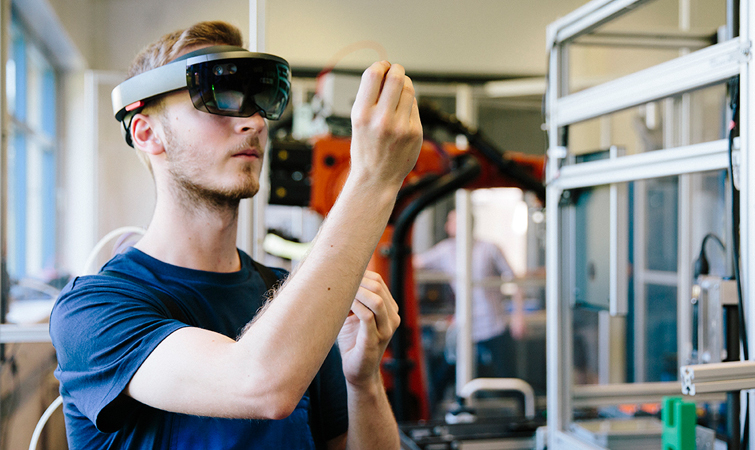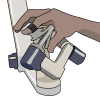Augmented/Virtual Reality and Human-Machine Interfaces
Human-machine interface technology is used by almost all industrial organizations—including energy, transportation, manufacturing and more.
At Case Western Reserve, we’re plugging into cognitive enhancements and looking deeper into the human body. By fusing human and machine intelligence, our researchers have developed new ways to treat brain disease—specifically therapeutic virtual environments and neuroprosthetic interfaces designed to help people with neurological injury (due to stroke, cerebral palsy, and spinal cord injury) regain lost vestibular and limb function.
We are also developing mixed reality human-machine interfaces to control large swarms of autonomous robots. Furthermore, our work in designing closed-loop control systems to enhance assistive neuromuscular and haptic electrical stimulation will lead to new rehabilitation strategies and sense of immersion in virtual environments and video games.
Labs and Facilities
- ECSE Undergraduate Computer Lab
- Interventions and Interfaces Research Group
- Jennings Computer Center Lab
- Kevin Kranzusch Virtual Worlds (Gaming and Simulation) Laboratory
- Nord Computer Laboratory
Institutes, centers and labs related to Augmented/Virtual Reality and Human-Machine Interfaces
Faculty who conduct research in Augmented/Virtual Reality and Human-Machine Interfaces

Marc Buchner

M. Cenk Cavusoglu
Vipin Chaudhary
Zonghe Chua

Michael Fu
Emily Graczyk
Lab website: https://www.graczyklab.com/






